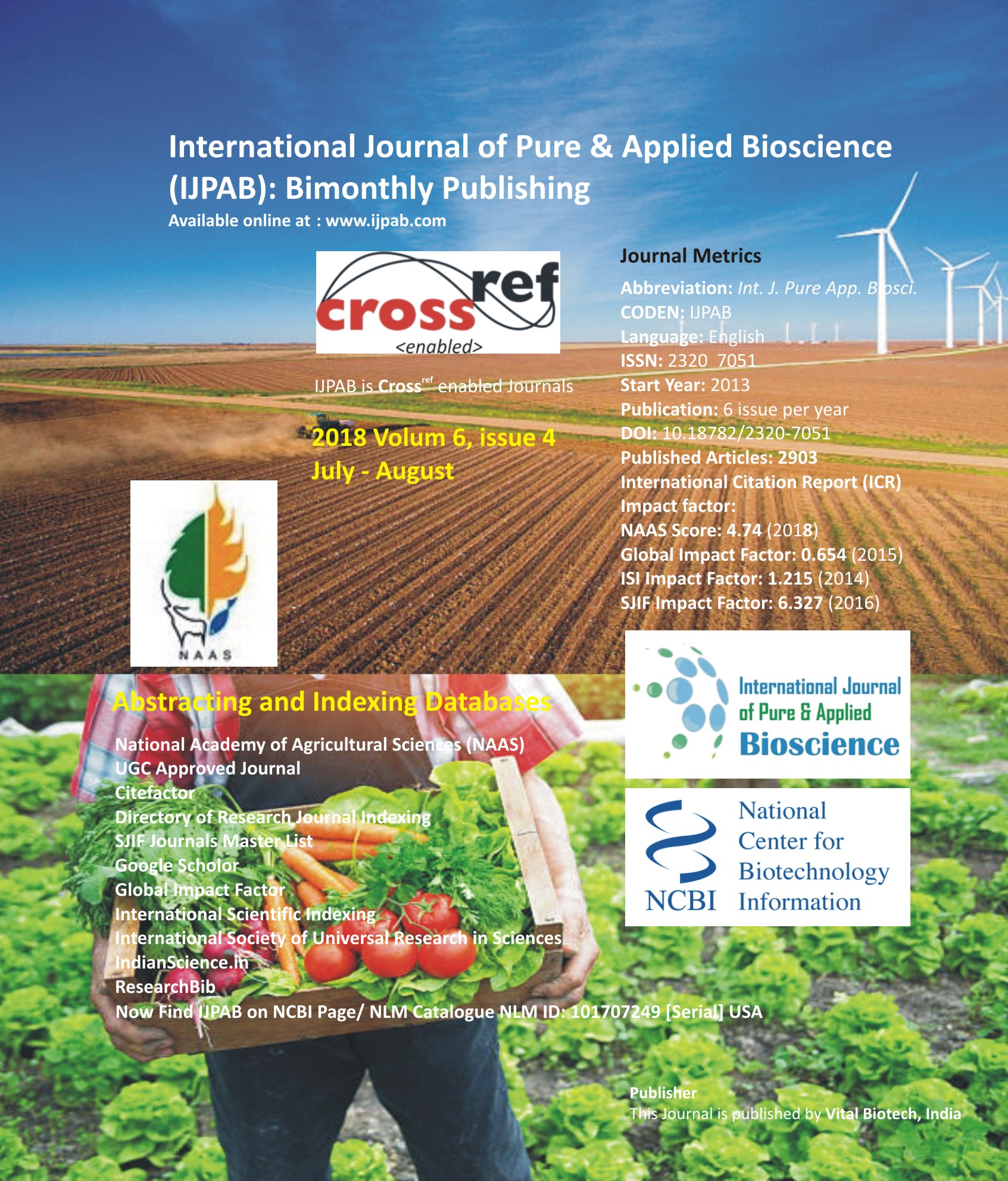
-
No. 772, Basant Vihar, Kota
Rajasthan-324009 India
-
Call Us On
+91 9784677044
-
Mail Us @
editor@ijpab.com
International Journal of Pure & Applied Bioscience (IJPAB)
Year : 2018, Volume : 6, Issue : 4
First page : (486) Last page : (491 )
Article doi: : http://dx.doi.org/10.18782/2320-6901
Prevalence of Twig Blight of Chilli Caused by Choanephora cucurbitarum in Major Growing Districts of Telangana
J. Chandrakala* and B. Vidyasagar
College of Agriculture, Professor Jaya Shankar Telangana State Agricultural University Rajendranagar, Hyderabad-500030, Telanagana, India
*Corresponding Author E-mail: chandrakala.j91@gmail.com
Received: 5.07.2018 | Revised: 16.08.2018 | Accepted: 21.08.2018
ABSTRACT
The mucor fungi Choanephora cucurbitarum is a facultative saprobe belonging to the Family Choanephoraceae is the new emerging pathogen as well as serious threat to chilli cultivars and other vegetables also in the Telangana state. The genus Choanephora was first described by Currey (1873) from fructifications on flowers of Hibiscus rosa sinensis. Till 1990 very few records of this pathogen on a few hosts were available in the literature in India. A roving survey was conducted in 6 major chilli growing districts of Telangana state representing 13 mandals and 38 villages for the prevalence of Choanephora twig blight diseases in chilli. Maximum disease incidence were recorded in Khammam district varying from 20 to 32% where as in Karimnagar and Warangal district the disease incidence was 18 and 15% respectively. There was no incidence of twig blight disease in chilli in Medak, Ranga Reddy and Nizambad districts.
Key words: Chilli, Twig blight, Mucor fungi, Disease incidence, Survey, Prevalence.
Full Text : PDF; Journal doi : http://dx.doi.org/10.18782
Cite this article: Chandrakala, J. and Vidyasagar, B., Prevalence of twig blight of Chilli caused by Choanephora cucurbitarum in major growing districts of Telangana, Int. J. Pure App. Biosci.6(4): 486-491 (2018). doi: http://dx.doi.org/10.18782/2320-7051.6901

